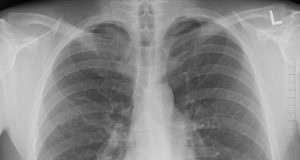A dry burn takes place when a lot of power is applied to a bare coil in order to heat it and “clean it up” from manufacturing residuals, and is at times also used for alignment and spacing.
However, according to specialists, this practice affects the structure of the alloy or the metal that the coil is made of on the surface, and may lead to the production of some unwanted particles that may stick to the aerosol and end up being ingested by the user.
The question of burning dry was previously addressed by Dr Konstantinos Farsalinos who looked into the matter with the help of a material sciences expert, Pedro Carvalho. The researchers concluded that the practive should not be carried out on any type of coil.
What is a coil made of?
The chemical composition of heating elements is subject to trends, but always consists of a resistance wire that is exposed to an electric current. Different types of resistance wires are used and their grade and quality depend on the brand.
As summarized by Dr Dworniczak, kanthal, stainless steel, nichrome and, lately, pure metals like nickel or titanium are generally used.
Kanthal is an alloy of iron (Fe, 70%), chromium (Cr, 20-30%), and aluminium (Al, 4-7%). When heated, aluminium oxides form a protective layer on the surface of the wire. Kanthal is one of the rare alloys used in heating elements that do not allow temperature control by the most advanced mods.
Nichrome is an alloy of Cr (80%) and nickel (Ni, 20%). When heated to a so called red hot temperature, an outer layer of chromium(III) oxide develops, which protects the heating element from further oxidation.
Ni200 is a full Ni material. Nickel oxide forms when the wire is heated above 400°C. Depending on the degree of oxidation two types of oxide may be formed, green Ni oxide is inert but black Ni oxide is very reactive.
Stainless steel (SS) has been introduced lately to the vapers market. Steel is an alloy of Fe and carbon (C). The stainless property of steel is due to the presence of at least 13% of Cr. Cr prevents chromium oxide from forming a protective layer. Some contaminants in the form of trace metals are present in SS. The classical SS316 contains also small amounts of molybdenum (Mo, 2.5%) and manganese (Mn, 2%).
Why is a dry-burn dangerous?
A dry-burn is dangerous for 3 reasons:
- The coating of oxidized material that is formed on the surface can peel off during vaping and be transferred to the lungs at the same time as the aerosol, in the form of microscopic particles, or particulate matter.
- Particulate matter can cause allergies. Nickel, for example, is recognized for causing skin rashes, itching, redness. Ni is also a carcinogenic compound when combined with carbon monoxide (CO), a product of incomplete carbohydrate combustion. Hence, this type of toxicity is probably less relevant in the case of e-cigarettes than for combustible tobacco products.
- Particulate matter can also be toxic for organisms. Cases of such toxicity are for example found in cases of welders exposed to Mn oxides.
According to the chemist, a dry burn may amplify the normal corrosion process at the surface of a coil and prematurely deteriorate the quality of the heating element. Toxic (for Mn) or carcinogenic effects (for the Cr(VI), a more oxidized form compared to Cr(III)) are improbable since the dose is minimal.
Unintentional dry burning
An unintentional dry burn may also happen when the e-liquid runs short in the tank and the cotton is not wet enough. If this happens, one is advised to simply get rid of the burnt coil and to mount a brand new one.
Similarly, it is not a good idea to re-use old coils since some level of corrosion would have probably already initiated and the surface of the metal would already be relatively more fragile.
Putting things in perspective
Despite the above, there is still no reason to think that a dry-burn would make vaping worse than smoking. Nevertheless, it does increase the risk of releasing potentially harmful compounds that may be inhaled by the user. In order to check the consistency of a home-made coil and to clean it from manufacturing residuals, a moderate heating of the wire may be more appropriate.
Additionally, using a coiler seems to help building coils in a reproducible way.

Nowadays, heating elements made of ceramic are present on the market. The testing of such elements is underway and results may be made public shortly. On paper, such material appears to be a safer option than alloys or metals, but in reality there are two types of ceramic coils with two very different safety levels.
Since we are so concerned with safety when it comes to selecting the best e-liquid quality and purchasing the most advanced mods that allow for temperature control, why not follow the experts’ advice and also avoid burning coils whilst ensuring that they are clean?
More of our recommendations here:
Written by Jérome Harlay – edited by Diane Caruana.













So you want me to change coils every day or week? U mad?
Let’s relativize even more. The dose makes the poison. And I need a little more than ideas how released tiny amounts of particles or atoms could have a negative effect on me before I feel worried. All I do is to avoid Nickel at all costs because of a known allergy.
And as long as we don´t know what kind of process aid or avivage is used during the production of the wires we can´t compare the benefit of a “unburnt” wire to a “burnt” wire. More data are needed. In the meantime I will vape on and feel fine. (Besides, I am a German chemist).
Very nice! Thanks for your share here!
So I wonder if dry burning then dipping in water would wash off oxidization? I always believed that would mess with the metal heating so high then shocking in water so I don’t. But maybe it washes? Would like them to introduce the “water shock” to the study.
Interesting stuff although I already have found this information in somewhat greater detail elsewhere.
However, I would have liked to see more specificity in the article.
Such as concrete temperatures where the different materials start to degrade and become a risk..
Nickel I find give a horrible and non-neutral vape with a metallic taste, and I have nickel allergy, contact allergy, but still..
Also titanium isn`t mentioned.
If anyone could provide more detailed information or provide links to said information, I would be very grateful 🙂
scare mongering when you say it is dangerous than smoking.! millions are developing coils at home and they don’t have physics or chemistry degree.! if it was so dangerous then millions might have been suffering from cancer like smoking. but it is not so.!! so STFU.! and yes, I was a pack a day smoker.!! you just have no idea how dangerous smoking is. I almost lost my breathing pipe in neck area.!!
FYI, engine cylendars are all metal and there is oil around it at nearly burning point.! I doubt vapers come anywhere close to internal combustion engine burning and yet we take cars as safe. isn’t it?
and yes, there are lots of particles in gas/petrol and lots more in diesel.!
simple thumb rule is that discard the coil when it tastes strange or burnt. or get a platinum one if you want to clean it. rest of coils are super cheap and I don’t see point in cleaning it to reuse it. when you use new metal then read about signs when it is corrupt. not all metals will turn black when unsafe.
tcr is almost standard everywhere so use it. this means kenthal is out but you get far better taste in SS or ti. try to increase resistance of ss coil because it’s tcr value is low.. that way it will work better. around 0.4 or more for SS, around 0.1 or more for ti. adjust wattage if it hits temp limit frequently.
That`s not what is said, obviously you can`t read..
Or write..
And discarding the coil when it tastes weird relates to premade coils, not the ones that are dry burned and therefore not what the article is about.
“FYI, engine cylendars are all metal and there is oil around it at nearly
burning point.! I doubt vapers come anywhere close to internal
combustion engine burning and yet we take cars as safe. isn’t it?”
That is just about the dumbest comment I have ever read.
You spell all they keywords wrong, you make a silly comment that has NOTHING to do with vaping.
Nobody should ever listen to anything you ever say..
“There is no reason to think that a dry-burn would make vaping worse than smoking.”
NO REASON..
Learn to read, AND spell, before making idiotic and childish comments with absolutely zero real life value or meaning..
” I almost lost my breathing pipe in neck area”
Just use google translate if you can`t speak english..
it would be nice for them to offer an alternative, for people for cleaning and setting up their coils, if they are telling people not to dry burn their coils.
Hi Mark, we thought about that and wrote a companion article where advices are given to vapers to clean their atomizers.
http://www.vapingpost.com/2016/12/13/in-search-of-a-safer-vaping-style/
thank you very much!
Many thanks for the interesting article! I think it is wise to discuss those issues instead of denying them. Especially the vaping industry should do a more thorough job on testing and risk assessment before throwing just any new product/material on the market. As a consumer I understand that people do not care about those “minor risks”, but as a manufacturer or dealer there should be much more responsible actions. Together with my wife I just opened a vaper shop in Cologne, Germany. We are very focused on minimizing all risks and enable our customers to have the safest possible vaping experience (e.g. battery safety, liquid quality & additives, coil and wicking material). What materials would you recommend to use for the coils and wicks? Titanium and unbleached organic cotton? How would you describe the safest possible e-cig set-up?
Hi Christian, organic cotton seems a good option associated to Titanium that further allows regulating the temperature of your coil via the Temperature Control mode that is gaining in popularity on the most recent mods/boxes. Unfortunately the inherent properties of Kanthal do not allow regulating the temperature and cannot be used with this functionality.
What about dry burning at 2 watts using short 3-4 second intervals. The coil doesn’t glow red and it seems to eventually get most of the gunk off. Is this any better, or just the same as regular dry burning? I’m talking about spaced kanthal coils by the way.
(I agree in general that it’s better to minimize unnecessary risks)
Now my question is what about when build your own coils. For example I use a torch to heat the coil red hot to compress it with pliers or tweezers to keep the coils tightly closed. Is that better than electrically burning it or is it still the same thing and recommended not to as well?
if you don’t dry burn it…. how do you balance the coil for a dual build? for ss wires how do you find it stuck for 2yrs in a mouth for braces? just asking…
With regard to balancing coils, and also, by extension preventing hot spots in single coils, the easiest solution is using identical length coils and making non-contact coils. Non-contact coils means that the “wraps” don’t touch, giving the current no place to short from one loop to another. In this kind of design, the current has to always flow through the full length of the coil, so if the coil is the same gauge and length, resistance will always be roughly equal.
As for SS, same as for all of the other metals mentioned, the concern is that the heating vastly accelerates the oxidation of the metal, exposing the user to many more of the byproducts of that oxidation process at a faster rate. In addition to iron, carbon, and chrome, SS316L also contains nickel, molybdenum, manganese, silicon, phosphorus, and sulfur. Heating the metal may change the concentration of these various elements that is “available” to your juice for absorption and delivery to your body, though many of them are not present in amount that would ever be of concern.
Ultimately, you have to use your own judgement. It’s better to know that these things are there and be able to make an informed decision than to just not worry about it and come what may.
In the last blood analysis I did, I had excess of phosphorus. I am vaping SS316L for several weeks only. I am repeating the analysis to be confirm whether I have excess of phosphorus. If that is true, it could be related with dry burning SS316L, and maybe I could try to go back to kanthal and repeat the analyses.
Very intersting – thanks for sharing! It would be great if you could keep us posted on that!
Hi Gargamelle, the phosphorus that is tested in your blood is in the form of phosphate, an ion. The one that may be released by a resistive wire is bound to particles and in the form of atoms.
I am not a doctor in medicine but you should ask you GP to check the level of your parathyroid hormone, Vitamin D and calcium concentration at the same time as the concentration in phosphate.
Hi Jerome and Christian,
I repeated the blood analysis. The first one was after 4 hours without eating, but keeping vaping, and the second one was after 8 hours without eating and vaping. In the second one the phosphorus levels were OK, so I stay much more confident now that it was not important. Moreover, the calcium and creatinine levels were ok in both analyses.
this is why here in the frigid north dry burn these all the time. http://www.homedepot.com/p/1-500-Watt-Utility-Milkhouse-Thermostat-Portable-Fan-Heater-DQ1409/205202877?MERCH=REC-_-NavPLPHorizontal1_rr-_-NA-_-205202877-_-N
I read the article with interest. Indeed the notion of the oxide formation is correct. I do, however, take issue with this being a safety concern, as opposed to a longevity of the coil issue.
When we consider the surface area of a coil and the depth of the layer of oxidization which occurs, then further consider the fact that only a tiny fraction of this oxidized layer may become entrained in the the vapor produced it becomes clear that we are talking about minuscule fractions of potentially harmful particulates. That this phenomena could rise to a level of harm is non-sequitur.
However, the presence of the oxidized layer has something of a cascade effect on the longevity of the coil. Once a coil is dry-burned to clean it there is a shorter time before the coil again needs to be cleaned. The more often this is repeated the more fragile the coil becomes eventually leading to mechanical failure.
Imma listen to this dude, I mean he has to be the smarter guy… He Bruce Nye, The Vaping Guy.
This comment is amazing. Job well done friend.
Ding ding ding!
We have a winner! 😀
-___- pretty good article except for the lack of proofreading or proper grammar. oh and that last paragraph was painful… felt like i was back in highschool writing listening to classmates finish their narrative/persuasive or debatable essay.
Are you serious haha. When complaining about grammar and proof reading I fully expect YOU to check your own. YOUR grammar is terrible, Get to fuck you sado
I was thinking the same thing. Perhaps he would benefit from a high school Composition 101 refresher class himself.
-___- (IS THIS HOW WE BEGIN SENTENCES? NO CAPITALISATION) pretty good article except for the lack of proofreading or proper grammar. (CAPITALS AGAIN!) oh and that last paragraph was painful… (<) felt like i (CAPITAL ‘I’ – PRONOUN!) was back in highschool (HIGH SCHOOL, THERE IS NO ‘HIGHSCHOOL’) writing listening (WRITING LISTENING, ING ING ING ARE YOU WRITING AND LISTENING OR JUST LISTENING?) to classmates finish their narrative/persuasive or debatable essay.
There is a button on the keyboard called the ‘Shift’ button which you can press whilst pressing a letter and it will make it a big letter like ‘T’ instead of ‘t’. Use it at the beginning of sentences for that ‘I learned how to write properly’ look. 🙂
Oh my gooood, how does EVERYTHING turn into an argument about grammar?
ON THE INTERNET!
It should be fully expected that people will utilize nothing more or less than “text talk”, when commenting online, and WHAT`S WITH THE CAPITAL LETTERING????
Jeeez..
Way to subdue the completely unnecessary comments..
Don`t get me wrong I`m all about sarcasm, but I`m also TRYING to find comments relevant to the actual subject..
My capitalisation had a purpose, to highlight my questions. What’s KF95’s excuse other than the obvious attempt to attack grammar and, of all things, proof reading! Clearly none were employed by the very person complaining about it. Pretty relevant.
KF95 wasn’t writing for online publication. The author of this article was. There’s a difference. Can’t this site afford proofreaders or, better yet, an editor? This author’s poor writing skills detract immensely from his content. I suspect he’s not a native English speaker. At least I hope that’s his excuse because I know he’s not stupid.
You’re right. This guy is a horrible writer. I read another article he wrote and had to pause and contemplate the meaning of so many of the sentences that I was afraid I had been suddenly stricken with dementia.